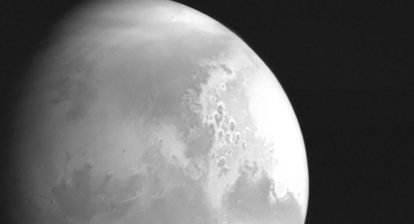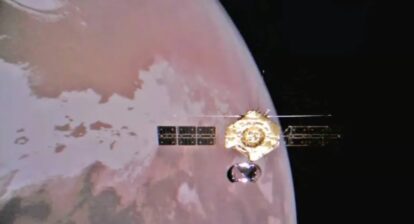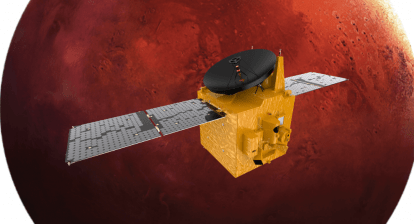There are quakes on Mars and NASA’s InSight Lander has recorded a monster. This is now the biggest recorded so far. Going by the scale used on earthquakes, this one has been estimated to have reached a magnitude of 5. The previous record holder had magnitude 4.2 (August 25, 2021). While this may not be a huge quake compared to earth standards, for Mars this is a big one due to low seismic activity.

This seismogram shows the largest quake ever detected on another planet. Estimated at magnitude 5, this quake was discovered by NASA’s InSight lander on May 4, 2022, the 1,222 Martian day, or sol, of the mission. Credits: NASA/JPL-Caltech
According to NASA’s statement:
“NASA’s InSight Mars lander has detected the largest quake ever observed on another planet: an estimated magnitude 5 temblor that occurred on May 4, 2022, the 1,222nd Martian day, or sol, of the mission. This adds to the catalog of more than 1,313 quakes InSight has detected since landing on Mars in November 2018. The largest previously recorded quake was an estimated magnitude 4.2 detected Aug. 25, 2021.
InSight was sent to Mars with a highly sensitive seismometer, provided by France’s Centre National d’Études Spatiales (CNES), to study the deep interior of the planet. As seismic waves pass through or reflect off material in Mars’ crust, mantle, and core, they change in ways that seismologists can study to determine the depth and composition of these layers. What scientists learn about the structure of Mars can help them better understand the formation of all rocky worlds, including Earth and its Moon.
A magnitude 5 quake is a medium-size quake compared to those felt on Earth, but it’s close to the upper limit of what scientists hoped to see on Mars during InSight’s mission. The science team will need to study this new quake further before being able to provide details such as its location, the nature of its source, and what it might tell us about the interior of Mars.
“Since we set our seismometer down in December 2018, we’ve been waiting for ‘the big one,’” said Bruce Banerdt, InSight’s principal investigator at NASA’s Jet Propulsion Laboratory in Southern California, which leads the mission. “This quake is sure to provide a view into the planet like no other. Scientists will be analyzing this data to learn new things about Mars for years to come.”

This image shows InSight’s domed Wind and Thermal Shield, which covers its seismometer, called Seismic Experiment for Interior Structure, or SEIS. Credits: NASA/JPL-Caltech
The large quake comes as InSight is facing new challenges with its solar panels, which power the mission. As InSight’s location on Mars enters winter, there’s more dust in the air, reducing available sunlight. On May 7, 2022, the lander’s available energy fell just below the limit that triggers safe mode, where the spacecraft suspends all but the most essential functions. This reaction is designed to protect the lander and may occur again as available power slowly decreases.
After the lander completed its prime mission at the end of 2020, meeting its original science goals, NASA extended the mission through December 2022.







